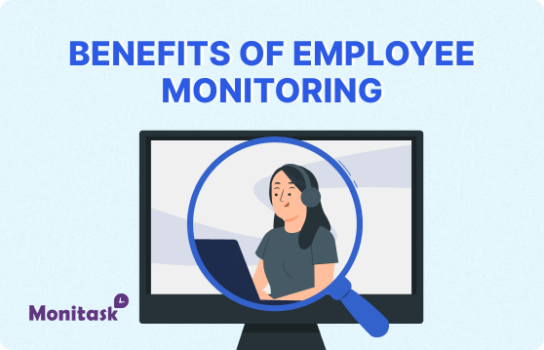Low Productivity at Work: 10 Main Factors & Strategies on How to Tackle It

Introduction
Productivity in the workplace is a critical determinant of organizational success. When employees are productive, tasks are completed efficiently, goals are met, and the overall morale of the workforce improves. However, low productivity is a common challenge faced by many organizations, leading to missed deadlines, increased costs, and decreased employee satisfaction. Understanding the root causes of low productivity and implementing effective strategies to tackle them can significantly enhance workplace efficiency and success.
This article explores the ten main factors contributing to low productivity at work and provides practical strategies to address each issue. By identifying these factors and taking proactive measures, organizations can foster a more productive and positive work environment.
1. Lack of Clear Goals and Objectives
Factor
When employees are unsure about their roles, responsibilities, and what is expected of them, it leads to confusion and inefficiency. Ambiguity in goals can result in employees working on low-priority tasks or duplicating efforts.
Strategy
Establish clear, achievable goals and communicate them effectively. Use the SMART criteria (Specific, Measurable, Achievable, Relevant, Time-bound) to set objectives. Regularly review and adjust goals as needed to ensure they remain aligned with organizational priorities.

2. Poor Time Management
Factor
Time management issues such as procrastination, inability to prioritize tasks, and constant distractions can severely hinder productivity. Employees who struggle with time management often find themselves overwhelmed and unable to complete tasks on time.
Strategy
Implement time management training programs and tools. Encourage the use of techniques such as the Pomodoro Technique, time-blocking, and prioritization frameworks like the Eisenhower Matrix. Promote a culture that values punctuality and efficient use of time.
Get more out of your business
Get the best employee engagement content every week via mailing list

3. Ineffective Communication
Factor
Miscommunication or lack of communication can lead to misunderstandings, errors, and delays. Ineffective communication channels and practices can create barriers to information flow, collaboration, and problem-solving.
Strategy
Foster a culture of open and transparent communication. Use multiple communication channels to ensure messages are conveyed clearly and effectively. Implement regular team meetings, feedback sessions, and collaborative tools to enhance communication.
4. Unhealthy Work Environment
Factor
A toxic or unhealthy work environment, characterized by poor relationships, lack of support, and high levels of stress, can demotivate employees and reduce productivity. Issues such as workplace bullying, discrimination, and inadequate support systems contribute to a negative atmosphere.
Strategy
Promote a positive and inclusive workplace culture. Implement policies that address workplace bullying and discrimination. Provide support systems such as employee assistance programs (EAPs) and wellness initiatives to help employees manage stress and maintain a healthy work-life balance.

5. Insufficient Resources and Tools
Factor
When employees lack the necessary resources, tools, and technology to perform their tasks effectively, it leads to delays and reduced productivity. Outdated or inadequate equipment can hinder performance and cause frustration.
Strategy
Invest in up-to-date technology and tools that enhance productivity. Regularly assess and upgrade resources as needed. Provide training to ensure employees are proficient in using new tools and technologies.
6. Lack of Training and Development
Factor
Employees who are not adequately trained or lack opportunities for professional development may struggle to perform their tasks efficiently. This can lead to mistakes, reduced innovation, and lower overall productivity.
Strategy
Offer continuous training and development programs. Encourage employees to pursue further education and skills development. Create a culture of learning where knowledge sharing and professional growth are valued.

7. Poor Leadership
Factor
Ineffective leadership can lead to low morale, confusion, and lack of direction among employees. Leaders who are not supportive, clear, or consistent in their communication can negatively impact productivity.
Strategy
Develop strong leadership skills within the organization. Provide leadership training and mentoring programs. Encourage leaders to practice transparency, empathy, and effective communication. Regularly seek feedback from employees to improve leadership practices.
8. High Employee Turnover
Factor
Frequent turnover disrupts workflow, increases the burden on remaining employees, and incurs costs related to hiring and training new staff. High turnover rates can indicate underlying issues within the organization.
Strategy
Focus on employee retention strategies such as offering competitive salaries, benefits, and opportunities for career advancement. Foster a positive work culture and address any issues that may be causing dissatisfaction. Conduct exit interviews to understand why employees leave and make necessary improvements.

9. Work Overload
Factor
Overloading employees with too many tasks or unrealistic deadlines can lead to burnout, stress, and decreased productivity. Employees who are constantly overwhelmed are more likely to make mistakes and have lower job satisfaction.
Strategy
Ensure workloads are manageable and evenly distributed. Implement workload management systems and regularly review and adjust workloads as needed. Encourage employees to take breaks and use their vacation time to prevent burnout.
10. Inadequate Recognition and Rewards
Factor
Employees who feel undervalued or unrecognized for their efforts are likely to be less motivated and productive. Lack of appreciation can lead to decreased morale and engagement.
Strategy
Implement recognition and reward programs to acknowledge employees’ contributions. Regularly provide positive feedback and celebrate achievements. Create a culture of appreciation where employees feel valued and motivated to perform at their best.
Conclusion
Low productivity at work is a multifaceted issue that requires a comprehensive approach to address effectively. By understanding the main factors contributing to low productivity and implementing targeted strategies, organizations can create a more efficient and positive work environment. Clear goals, effective communication, supportive leadership, and a focus on employee well-being and development are key components in enhancing productivity.
By proactively tackling these challenges, organizations can not only improve their performance but also foster a culture of engagement, satisfaction, and success among their employees.
— The Monitask Team
Frequently Asked Questions
What are some effective ways to communicate with my team?
Effective communication with your team can be achieved by using multiple channels (e.g., emails, meetings, collaborative tools like Slack or Microsoft Teams), maintaining transparency, and encouraging open dialogue. Regular team meetings, one-on-one check-ins, and feedback sessions can help ensure everyone is on the same page. Active listening and clear, concise messaging are also crucial for effective communication.
How can I create a positive work environment?
Creating a positive work environment involves fostering inclusivity, promoting work-life balance, and providing support systems for employees. Implement policies that address workplace bullying and discrimination, offer wellness programs, and encourage a culture of recognition and appreciation. Building strong interpersonal relationships and providing opportunities for professional growth can also contribute to a positive work atmosphere.
What steps can I take to reduce employee turnover?
Reducing employee turnover requires a focus on employee satisfaction and engagement. Offer competitive salaries and benefits, provide opportunities for career advancement, and create a supportive work culture. Conduct regular surveys to understand employee needs and address any concerns promptly. Implementing effective onboarding and mentoring programs can also help new employees integrate smoothly and feel valued from the start.


